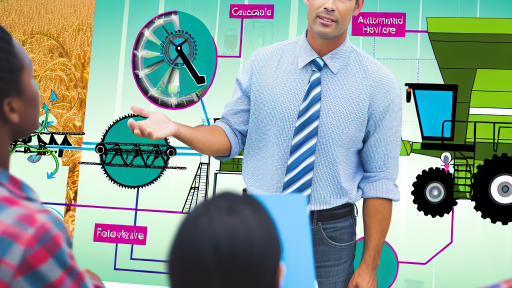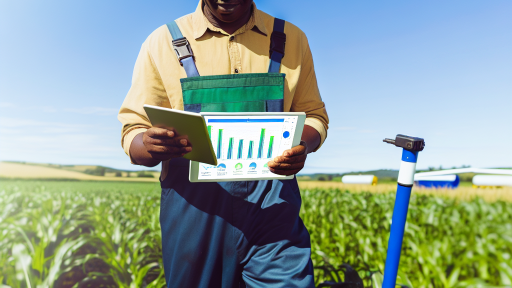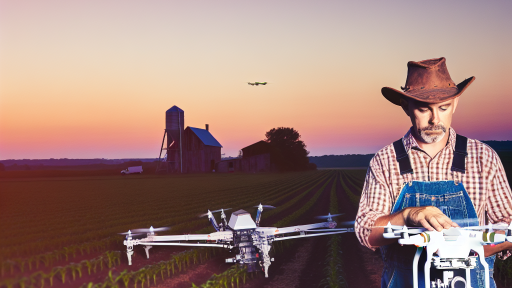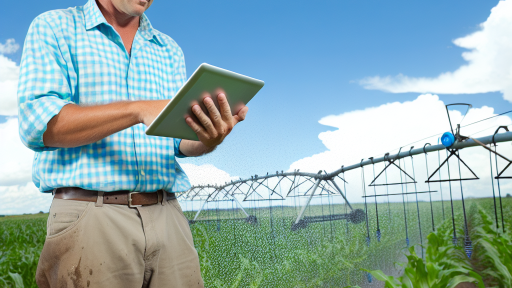Overview of Precision Farming and Its Importance in Modern Agriculture
Precision farming enhances agricultural productivity through data-driven methods.
This approach involves the use of technology to monitor and manage field variability.
As a result, farmers can optimize inputs such as water, fertilizers, and pesticides.
The goal is to increase yields while reducing costs and resource use.
Moreover, precision farming addresses the challenges posed by climate change.
It allows for real-time data analysis, which helps farmers make informed decisions.
Technological Innovations in Precision Farming
Technological advancements include GPS, drones, and IoT devices.
These tools enable precise measurements and monitoring of crops and soil health.
Farmers can track weather patterns and soil conditions remotely.
Data collected leads to better planning and resource allocation.
This innovation minimizes waste and maximizes efficiency in farming operations.
Impact on Sustainability
Precision farming contributes significantly to sustainable agriculture.
It reduces the carbon footprint by minimizing excess use of inputs.
Furthermore, precision techniques promote soil health and biodiversity.
Farmers can make environmentally conscious decisions based on data.
Transform Your Agribusiness
Unlock your farm's potential with expert advice tailored to your needs. Get actionable steps that drive real results.
Get StartedThis leads to healthier crops and ecosystems.
Economic Advantages for Farmers
Implementing precision farming can lead to substantial cost savings.
Farmers experience increased profitability due to improved crop yields.
Additionally, resource optimization reduces operational costs.
This approach also allows for better forecasting and risk management.
Consequently, farmers can invest more in future innovations.
Introduction to IoT
Definition of IoT
The Internet of Things, or IoT, refers to interconnected devices that communicate over the internet.
These devices collect and share data automatically.
IoT empowers users to monitor systems in real time.
As a result, this technology enhances decision-making processes across various industries.
Key Components of IoT
IoT comprises several critical components that work together seamlessly.
First and foremost, sensors play a pivotal role in data collection.
These devices capture information from the environment.
Next, connectivity is vital for transmitting data to centralized systems.
Devices can connect through various protocols, including Wi-Fi, Bluetooth, and cellular networks.
Data Processing
Once data is captured, processing occurs in real time.
This step analyzes the data to extract meaningful insights.
Cloud computing often provides the infrastructure for processing and storage.
User Interfaces
User interfaces allow individuals to interact with IoT systems.
They help visualize data and control connected devices effectively.
Examples include mobile applications and web platforms.
Benefits of Integrating IoT in Precision Farming Operations
Improved Crop Management
The integration of IoT allows farmers to monitor crop health in real-time.
Farmers can use sensors to track soil moisture levels.
This data helps in making informed decisions about irrigation.
Showcase Your Farming Business
Publish your professional farming services profile on our blog for a one-time fee of $200 and reach a dedicated audience of farmers and agribusiness owners.
Publish Your ProfileIt also aids in identifying crop diseases early.
This proactive approach minimizes crop loss and enhances yields.
Optimized Resource Usage
IoT devices help in monitoring the usage of water and fertilizers.
This optimization leads to significant reductions in resource wastage.
Farmers can tailor their inputs based on exact crop needs.
Ultimately, this results in cost savings and increased sustainability.
Enhanced Data Collection
IoT provides a platform for continuous data collection.
Data analytics can reveal patterns and insights over time.
These insights inform better agricultural practices.
Farmers can adapt quickly to changing environmental conditions.
Real-Time Decision Making
IoT technology enables rapid data analysis and response.
This helps farmers make quicker decisions regarding crop management.
Timely interventions can safeguard against potential threats.
Moreover, real-time data ensures timely harvesting and planting.
Enhanced Market Intelligence
Farmers can access market data through IoT platforms.
This information helps them understand pricing trends and demand.
Such insights support better planning and strategy formulation.
Farmers can adjust their production to meet market needs effectively.
Improved Yield Prediction
The use of predictive analytics enhances yield forecasting.
By analyzing historical data, farmers can set realistic expectations.
Better predictions enable more effective resource allocation.
In turn, this cultivates a more profitable farming operation.
Increased Efficiency
IoT devices automate various farming processes.
This reduces the need for manual labor, enhancing efficiency.
Farmers can focus on more strategic tasks rather than routine chores.
Automation streamlines operations, leading to higher productivity.
Learn More: Cost Benefits of Adopting Precision Agriculture
Smart Sensors and Their Role in Data Collection for Precision Agriculture
Introduction to Smart Sensors
Smart sensors are revolutionizing precision agriculture.
They enable farmers to gather real-time data from their fields.
This technology helps in making informed decisions quickly.
Types of Smart Sensors
Several types of smart sensors enhance data collection.
- Soil moisture sensors monitor hydration levels.
- Temperature sensors track variations in microclimates.
- Pest detection sensors identify infestations early.
- Light sensors measure sunlight exposure for crops.
Benefits of Using Smart Sensors
Smart sensors provide numerous advantages for farmers.
First, they improve resource management significantly.
For instance, sensors can optimize water usage.
Secondly, they enhance crop yield predictions.
Farmers can adjust practices based on sensor data.
Data Integration and Analysis
Integrating sensor data creates a comprehensive view of agricultural conditions.
Data collected can be analyzed for actionable insights.
This integration facilitates precision farming strategies.
Moreover, it fosters proactive management of agricultural challenges.
Showcase Your Farming Business
Publish your professional farming services profile on our blog for a one-time fee of $200 and reach a dedicated audience of farmers and agribusiness owners.
Publish Your ProfileChallenges in Implementing Smart Sensors
Some challenges can arise when implementing smart sensors.
Firstly, the initial investment can be substantial for farmers.
Secondly, connectivity issues may affect data transmission.
Finally, proper maintenance is essential for optimal performance.
Future Trends in Smart Sensor Technology
The future looks promising for smart sensor technology in agriculture.
Advancements in AI will enhance data analysis capabilities.
Additionally, sensor costs will likely decrease over time.
This trend will make technology more accessible for all farmers.
Explore Further: Enhance Precision Farming with Sensor Data
Case Studies: Successful Integration of IoT in Farming Operations
Smart Irrigation Systems
Farmers have seen significant water savings through smart irrigation technology.
For instance, the AgriTech Innovations company developed a system using IoT sensors.
These sensors monitor soil moisture levels in real-time.
Consequently, irrigation is applied only when necessary, reducing water waste.
Moreover, this system has increased crop yields by optimizing water usage.
Precision Crop Monitoring
Farmers also benefit from precision crop monitoring solutions.
HarvestTech Solutions implemented a monitoring system that utilizes drones.
Drones equipped with IoT devices collect valuable data on crop health.
This data includes information about plant growth and potential pest issues.
As a result, farmers can make data-driven decisions for better crop management.
Livestock Health Management
IoT applications have transformed livestock health management practices.
Animal Health Technologies introduced a wearable device for cattle.
These devices track vital signs and behavior patterns of the animals.
Farmers receive alerts about any health concerns or abnormal behaviors.
This early intervention significantly reduces livestock mortality rates.
Supply Chain Optimization
IoT also enhances the agricultural supply chain.
SmartFarm Systems provides real-time monitoring of produce from farm to market.
By tracking temperature and humidity, they ensure optimal storage conditions.
This system minimizes spoilage during transit, increasing profit margins.
Furthermore, farmers gain insights into market demand, optimizing harvest schedules.
Data-Driven Decision Making
Data plays a crucial role in modern farming operations.
FarmInsight Analytics offers platforms that analyze farm data collected from various sources.
These insights help farmers identify trends and make informed decisions.
For instance, they can determine the best planting times based on climate predictions.
Consequently, this approach enhances productivity and sustainability in farming.
Explore Further: How Blockchain Is Making Farm-to-Market More Transparent
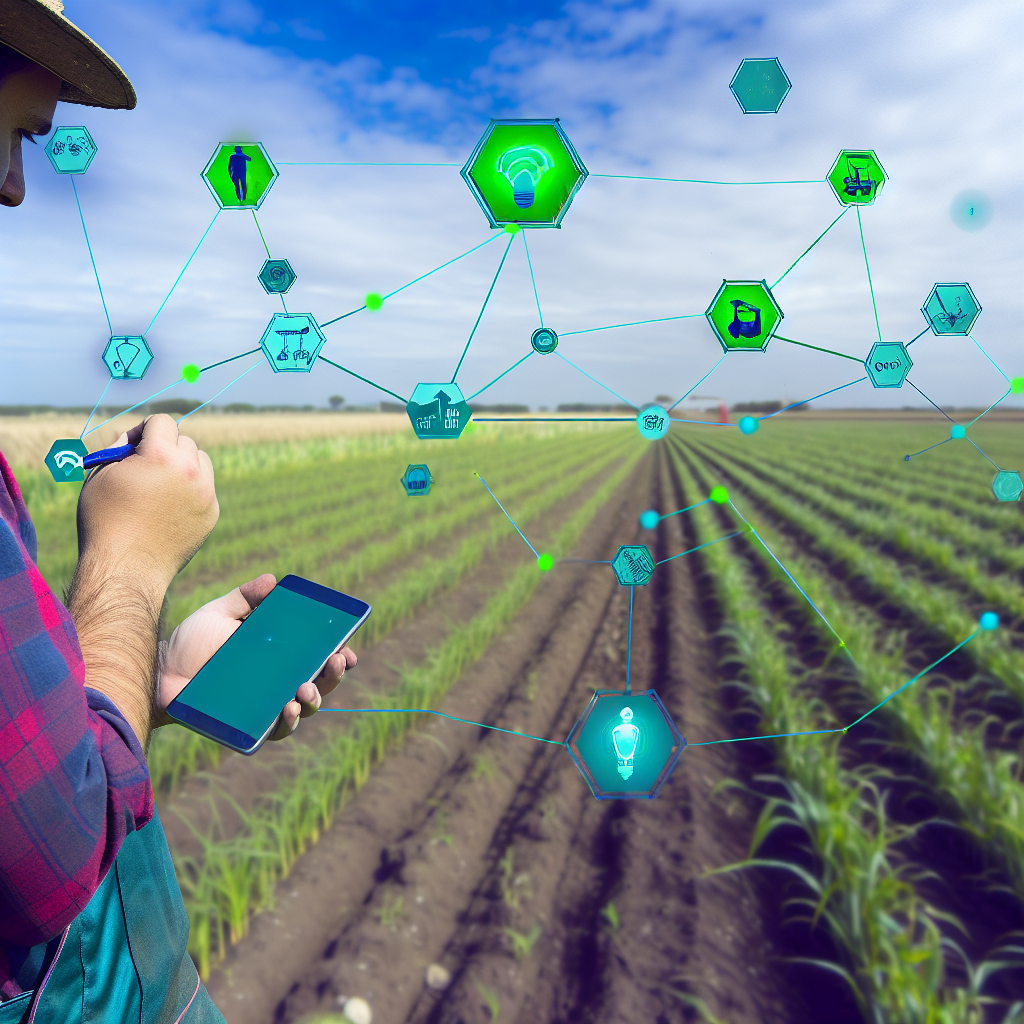
Challenges and Barriers to Implementing IoT in Agriculture
Technical Limitations
Many farmers face challenges with inadequate infrastructure.
For example, limited internet connectivity hampers IoT deployment.
Also, unreliable power sources disrupt the functionality of devices.
Moreover, outdated equipment can hinder data transmission.
High Initial Costs
The investment needed for IoT technology can be substantial.
Showcase Your Farming Business
Publish your professional farming services profile on our blog for a one-time fee of $200 and reach a dedicated audience of farmers and agribusiness owners.
Publish Your ProfileFarmers often struggle to justify these expenses.
In addition, maintenance costs can accumulate over time.
As a result, budget constraints often limit adoption.
Lack of Technical Know-How
Many farmers lack the necessary technical skills to utilize IoT devices.
Training programs are often unavailable or inadequate.
This knowledge gap can lead to suboptimal use of technology.
Furthermore, troubleshooting technical issues can be daunting.
Data Security and Privacy Concerns
IoT devices generate vast amounts of data, raising privacy issues.
Farmers worry about unauthorized access to sensitive information.
Additionally, data breaches can have severe consequences.
Consequently, concerns over security impede IoT adoption.
Resistance to Change
Many farmers are set in traditional ways of working.
This resistance can stem from fear of the unknown.
Moreover, some believe that their current methods suffice.
Ultimately, overcoming this mindset is crucial for change.
Regulatory Hurdles
Existing regulations can pose barriers to IoT implementation.
Compliance with agricultural standards can be complicated.
Furthermore, navigating the regulatory landscape can be time-consuming.
This complexity often discourages farmers from adopting new technologies.
Gain More Insights: Types of Crop Monitoring Sensors You Need
Future Trends: The Role of Artificial Intelligence and Machine Learning in IoT-Enabled Farming
Enhancing Data Analysis
Artificial Intelligence (AI) significantly improves data analysis in precision farming.
AI tools can process vast amounts of data in real time.
Farmers gain insights into crop health, soil conditions, and weather patterns.
This information enables informed decision-making for crop management.
Predictive Analytics for Yield Optimization
Machine Learning (ML) algorithms can predict crop yields with high accuracy.
These predictions help farmers allocate resources more effectively.
Farmers can optimize planting schedules based on anticipated weather conditions.
In turn, this leads to increased efficiency and higher yields.
Automated Farming Equipment
AI-driven automation is transforming agricultural equipment.
Robotic systems can perform tasks like planting, watering, and harvesting.
These systems work in conjunction with IoT devices for seamless operations.
As a result, labor costs decrease while productivity increases.
IoT-Enabled Smart Sensors
Smart sensors monitor various environmental factors in real time.
These IoT devices track temperature, humidity, soil moisture, and nutrient levels.
The data collected allows for precision irrigation and fertilization.
Consequently, resources are used more efficiently, reducing waste.
Remote Monitoring and Control
AI and IoT facilitate remote monitoring of farming operations.
Farmers can access data and control systems from anywhere via smartphones.
This capability enhances farming efficiency and responsiveness.
It allows immediate action based on data insights, improving outcomes.
Showcase Your Farming Business
Publish your professional farming services profile on our blog for a one-time fee of $200 and reach a dedicated audience of farmers and agribusiness owners.
Publish Your ProfileIntegrating AI with IoT Ecosystems
The integration of AI with IoT devices creates a holistic farming ecosystem.
This infrastructure promotes a continuous feedback loop for improvement.
AI systems learn from historical data and adapt to new information.
As a result, farming practices become increasingly advanced and effective.
Challenges and Considerations
While AI and IoT provide numerous benefits, challenges remain.
Data privacy and security issues are critical concerns for farmers.
Additionally, the initial investment in technology can be significant.
Farmers need to balance these challenges with the advantages of innovation.
Best Practices for Farmers to Start Integrating IoT into Their Operations
Understanding IoT and Its Benefits
Internet of Things technology connects devices and systems effectively.
Farmers can leverage data to enhance operational efficiency.
This technology reduces waste and optimizes resource management.
Moreover, IoT facilitates real-time monitoring of crops and livestock.
Evaluating Your Current Operations
Begin by assessing your existing farming processes.
Identify areas that could benefit from IoT integration.
For example, consider irrigation systems and livestock tracking.
This evaluation informs your technology adoption strategy.
Choosing the Right IoT Solutions
Select IoT solutions tailored to your farming needs.
Look for platforms that integrate seamlessly with existing equipment.
Consider the scalability of the technology for future needs.
Engaging with technology providers can clarify your options.
Implementing a Pilot Project
Start with a small-scale pilot to test your chosen IoT solutions.
This helps you gauge effectiveness before wider implementation.
Gather data on performance and identify areas of improvement.
Utilize feedback from your team to refine processes.
Training Your Team
Provide training for your team on using IoT devices effectively.
Ensure everyone understands the technology and its benefits.
This knowledge fosters a culture of innovation on the farm.
Regular training sessions can keep everyone updated on advancements.
Monitoring and Adjusting Your Strategy
Continuously monitor the performance of IoT solutions.
Use data analytics to evaluate their impact on productivity.
Be prepared to make adjustments based on real-world results.
This iterative approach allows for ongoing improvement.
Staying Informed About New Technologies
Stay updated on emerging IoT technologies and practices.
Subscribe to relevant agricultural technology news sources.
Engage with agricultural technology networks for insights.
Implementing innovative solutions keeps your operations competitive.
Additional Resources
Harnessing Data Insights for Precision Agriculture. | Kadence
Precision Agriculture: Benefits and Challenges for Technology …

